Sewing the Magnolia dress: more silk and more flowers in my wardrobe
Although knitting has dominated the blog lately, I have in no way given up sewing. Here is my latest Magnolia dress by Deer&Doe, in a dreamy floral silk fabric from Selvedge and Bolts.
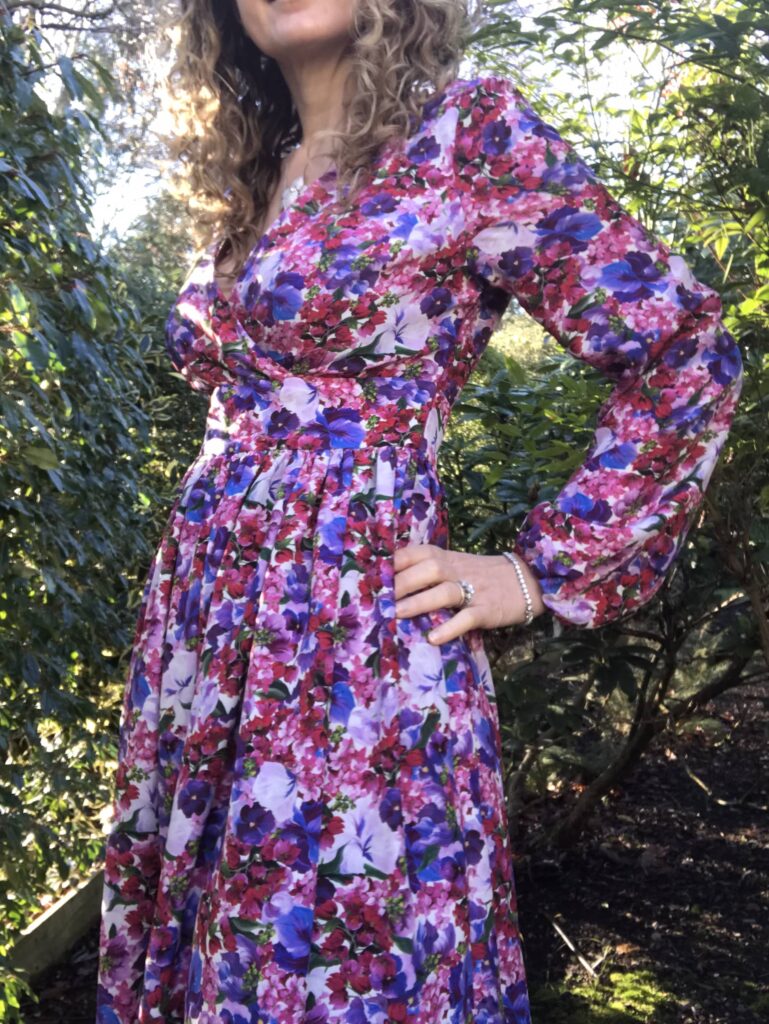
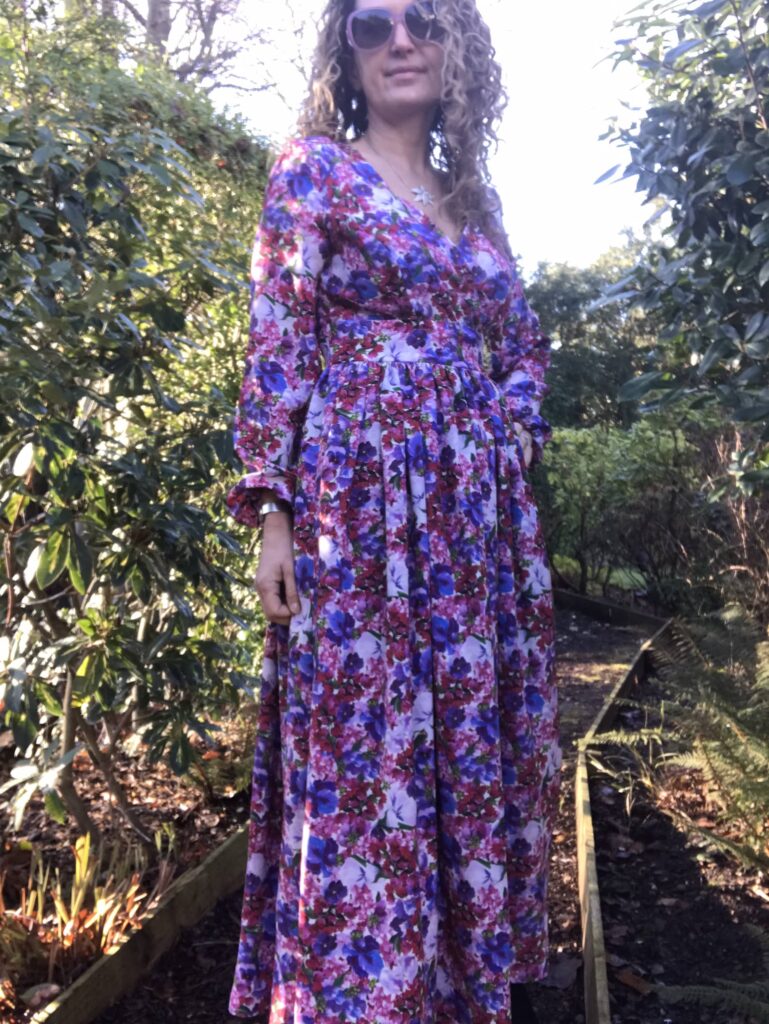
Magnolia pattern review: a long love story
Magnolia is one of my favourite dress patterns; and this version is the latest of a long series. In the past, I have sewn Magnolia dresses in stretch velvet (three times!); in none-stretch velvet; in silk to use as a luxury nightdress or a day dress. So many options!
There are many things I like about Magnolia:
- The shape is ultra-flattering. I am not a huge fan of empire waists but here it is just sitting at the right level. The multi-panel skirt perfectly balances the generous sleeves. And who does not love a wrap bodice?
- The bust fit (well, the entire fit actually) is perfect. Deer & Doe tends to size generously at the bust level. This suits me perfectly as despite my E-cup I never had to make any FBA for Magnolia (and neither for my Luzerne trench coat actually).
- This is an easy and (reasonably) quick project. There is no major technical difficulty with this project except for the invisible zip. And the dress comes together incredibly easily for such a stunning result. This is very comparable to sewing V9253, another of my favourite dress patterns.
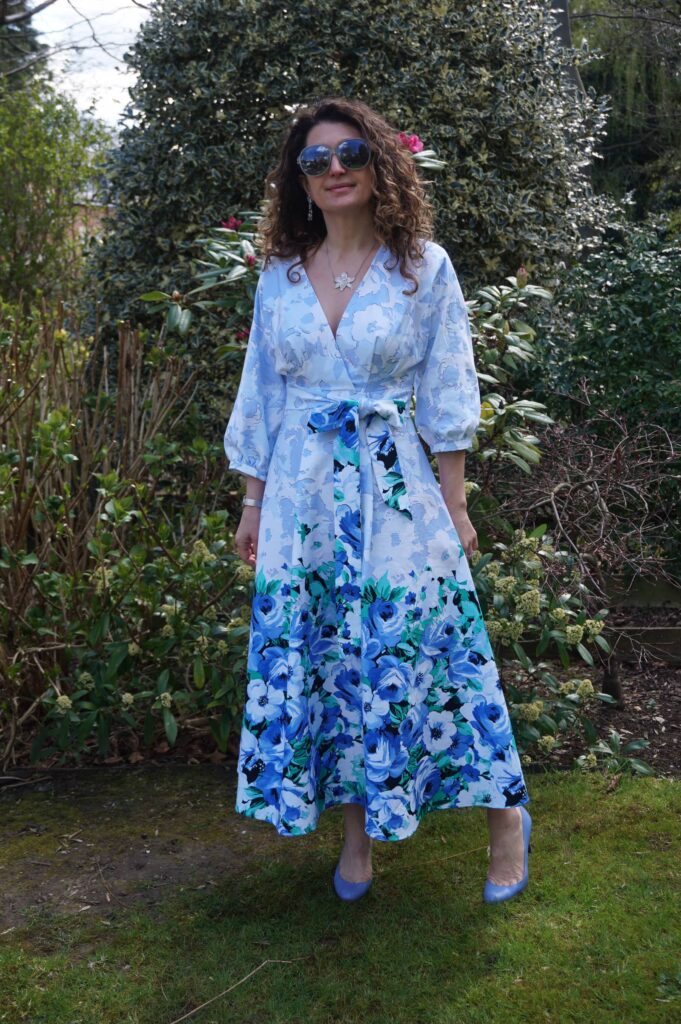
- The pattern instructions are super clear, as always with Deer & Doe.
Sewing Magnolia more efficiently: my advice
I have sewn Magnolia so many times that there are a few things I do differently to what the instructions recommend.
To get perfect princess bust seams, I reduce my seam allowance from 1.5 to 1cm at this level before sewing pattern pieces 1 and 3 together; and I use an ironing ham to get the seams in shapes. I also reduce seam allowances before setting-in the sleeves, as I have noticed working with less fabric makes the process much easier.
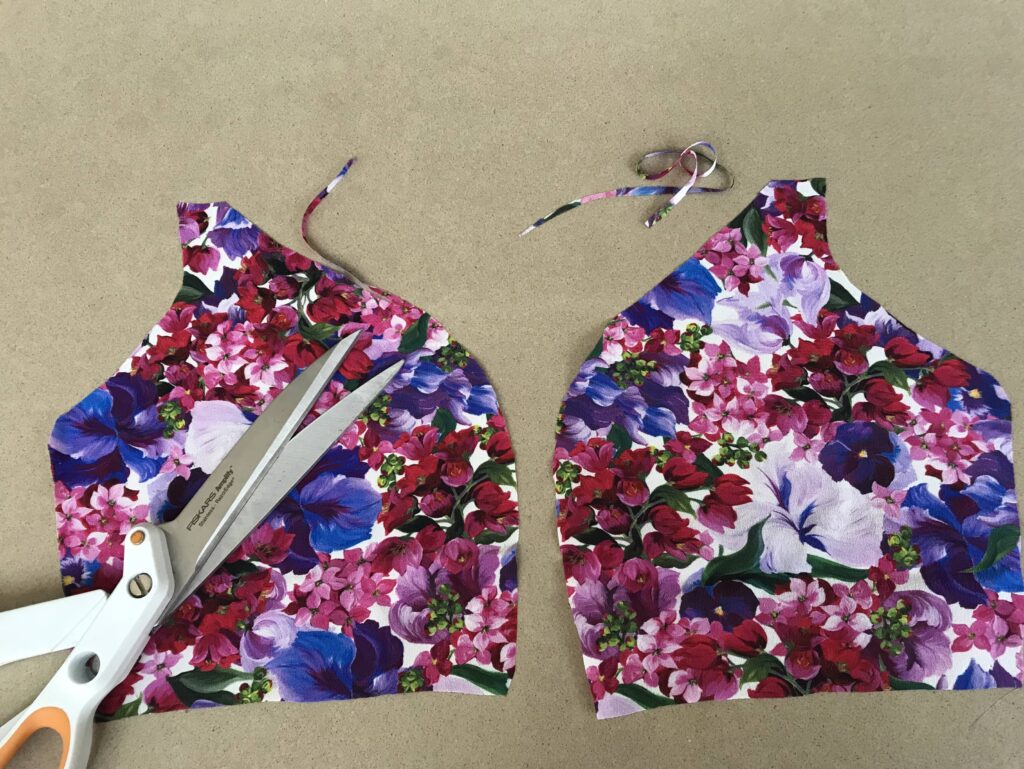
For a neater neckline, I entirely line the bodice instead of using bias binding. This prevents any visible stitching right at the middle front of the dress. To do this, I simply make two bodices (one main fabric, one lining); attach them together at the neckline; clip the curves; and understitch so that the lining remains invisible. (Then I attach the bodice to the skirt and the the sleeves as if main fabric and lining were one.)
For a neater waist, I also line the belt. I make two belts (main fabric + lining) instead of one and sandwich my bodice between the top of the two belt. I attach the skirt to my bottom of the MF belt, fold and iron the seam allowance of my L belt and finish by hand.
And for a skirt with less panels, which is useful when you work with fabric with large patterns of just when you want to make the process quicker, I either use the V9253 skirt or simply two rectangles of fabric gathered at the waist.
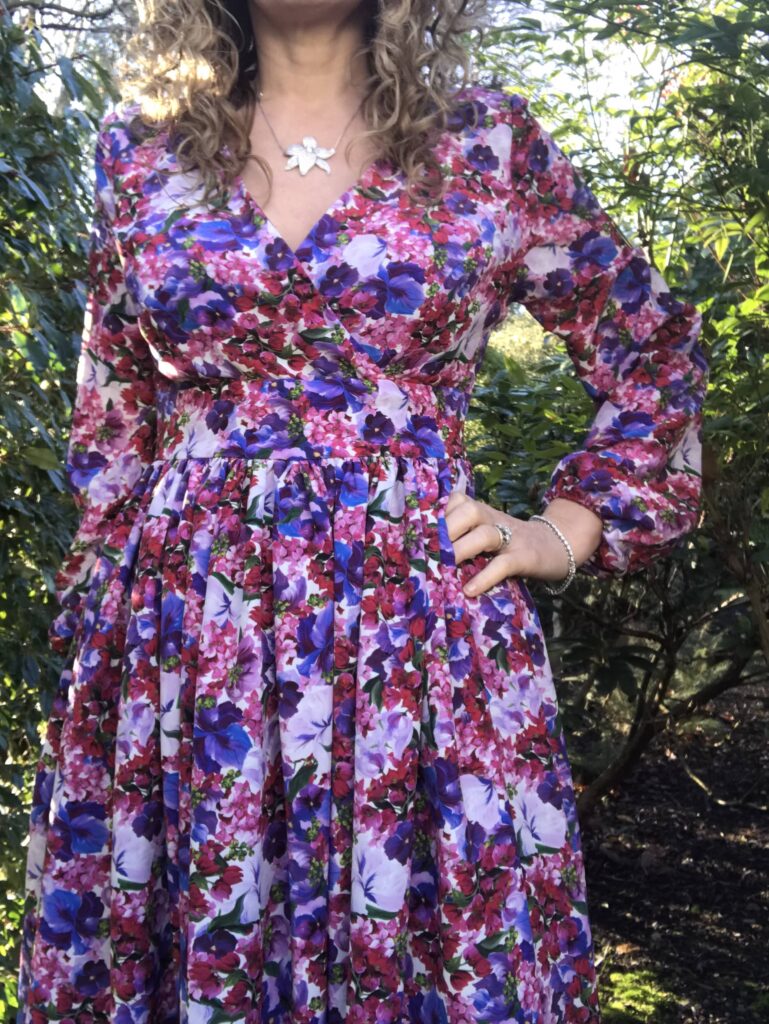
Sewing silk: my advice
I am a horrible fabric snob and I adore wearing silk (cotton, wool, cashmere – natural materials only please!). I used to be terrified at the idea of sewing such a delicate material but after a number of skirt and dresses, not any more!! Over the past 18 months I have actually sewn quite a number of silk garments:
This version of Magnolia is in a dreamy floral crepe silk from Selvedge and Bolts, one of my most reliable sources of exceptional luxurious fabric. Look at this beauty!
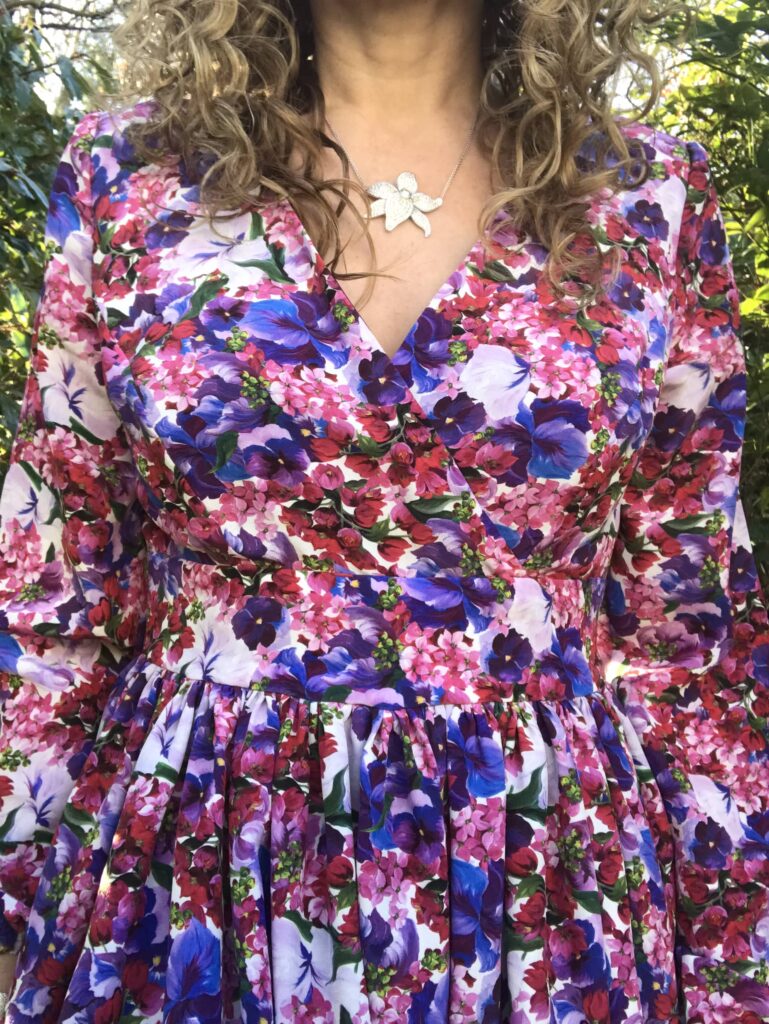
If you’re toying with the idea of sewing silk but are terrified to start, here are a few words of advice:
- Don’t overspend on the fabric. The more you spend on silk, the more terrified you will be to use it. My best source of reasonably-priced silk of good quality is Bennytex. Looking for deadstock is also a good option – I regularly browse through Amotreads‘ stock. Obviously as you become more competent do not hesitate to spend more, this is exactly what I did with this dress.
- Pre-wash and iron you fabric as you normally would, except if you are planning to have your dress professionally cleaned in the future. I personally only sew and knit clothes I can machine-wash… but I am the woman who puts all of her husband suits in her Miele washing machine! Wool program, no temperature, 600 spin, it works wonders for wool, silk, cashmere…
- Go for silk that is slightly thicker or that has texture. I find that silk crepe and silk dupioni are easier to work with, as they are less slippery that silk satin for instance. In any case look at the material weight, the heavier the easier.
- USE A MICROTEX NEEDLE, absolutely, even if you can’t find it on Amazon. Using a super-thin (60) general needle will not work a well, with some silks it may pull off strings and damage your fabric for good. And also use thin pins, not standard ones.
- Use a pattern you have already sewn, to reduce the risk of mistakes. Having to unpick stitches is particularly dangerous with silk.
- Line silk with silk if you can afford it, it would be such a pity to lose the softness and drape of silk because of a synthetic lining.
- Go SLOW – no need to rush, you are unlikely to want tens of silk dresses in your cupboard (except if you are me), so you have all the time in the world!
Conclusion
I cherished this fabric and hesitated for a long will on which pattern to use. I am very pleased I chose Magnolia, as it really shows the fabric under its best light!
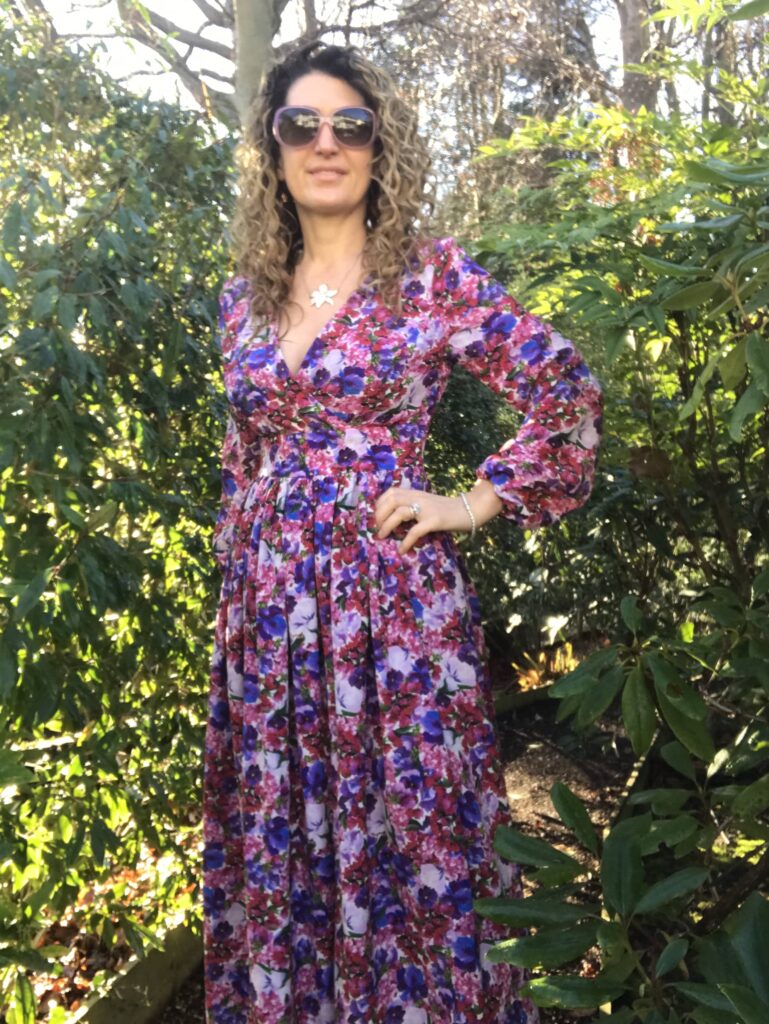

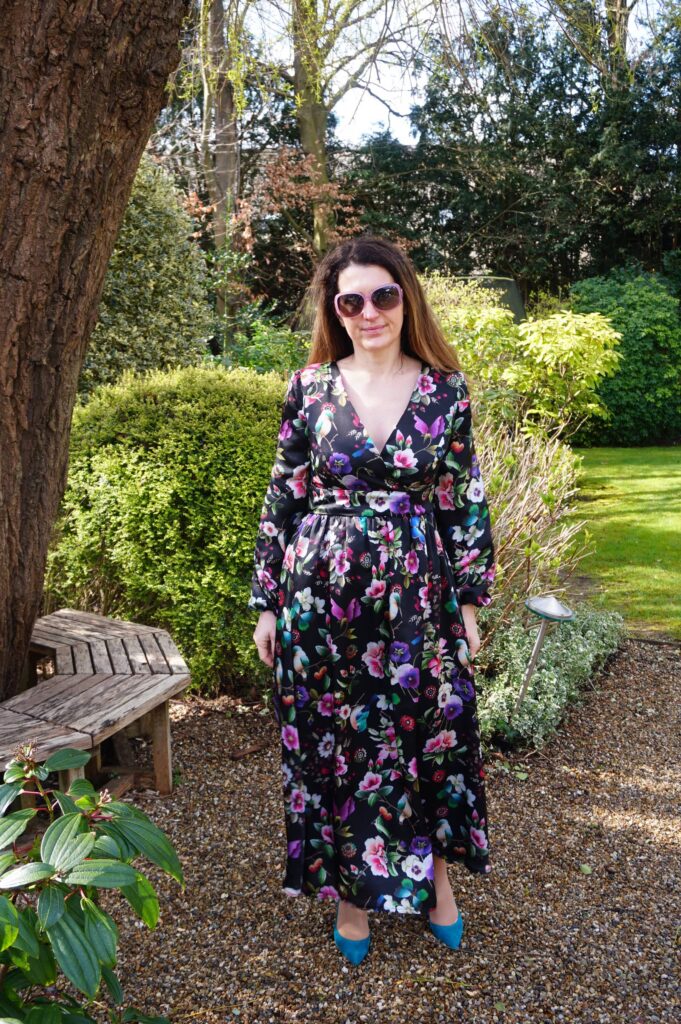
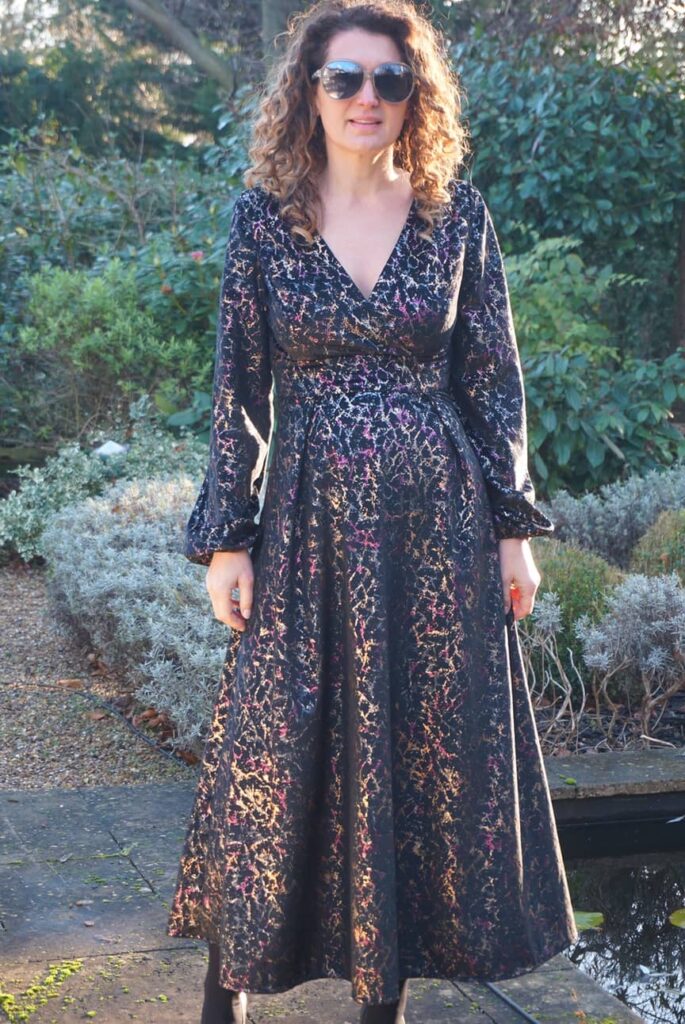
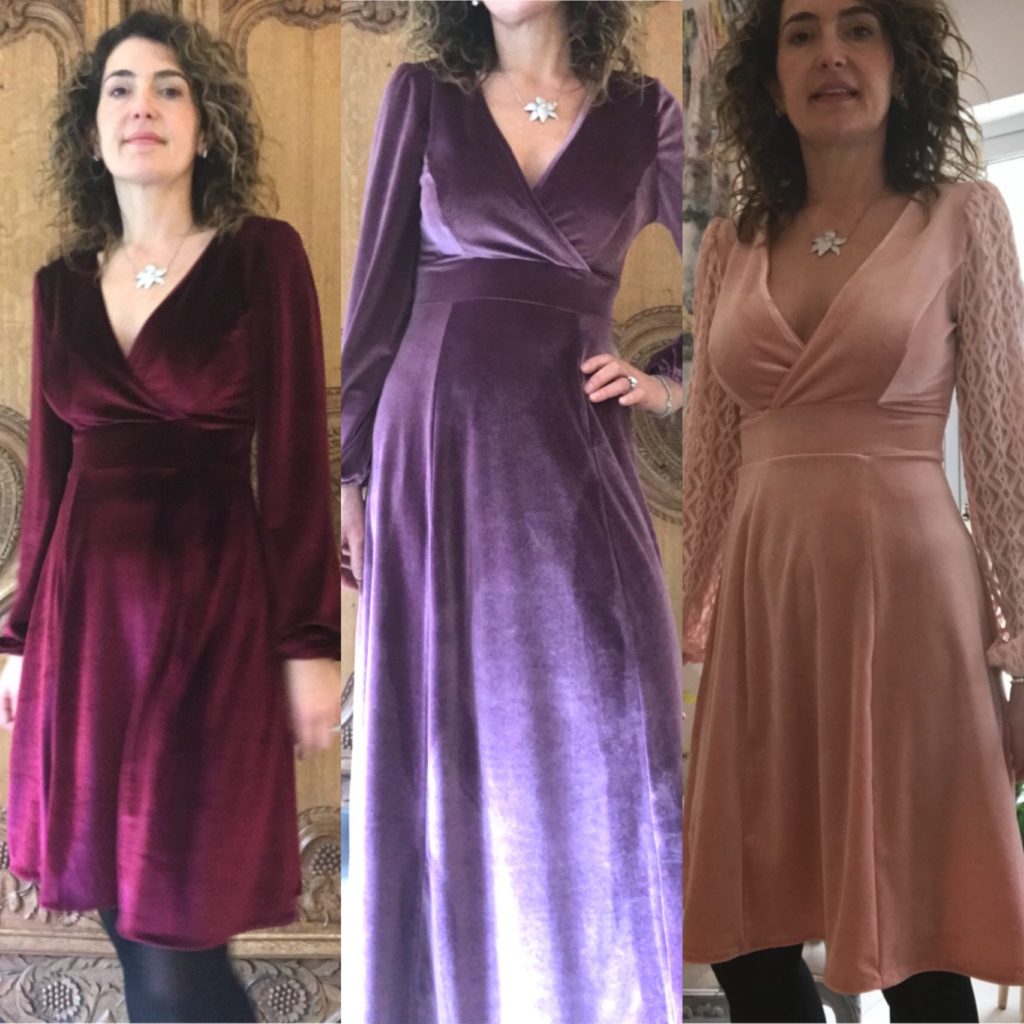
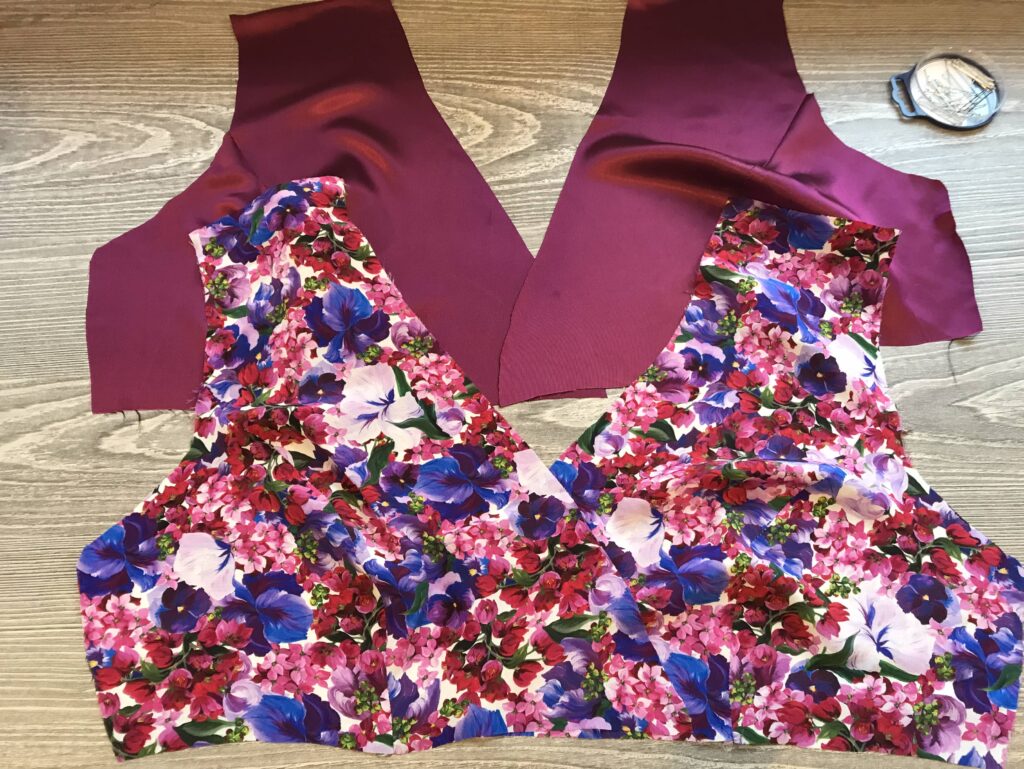
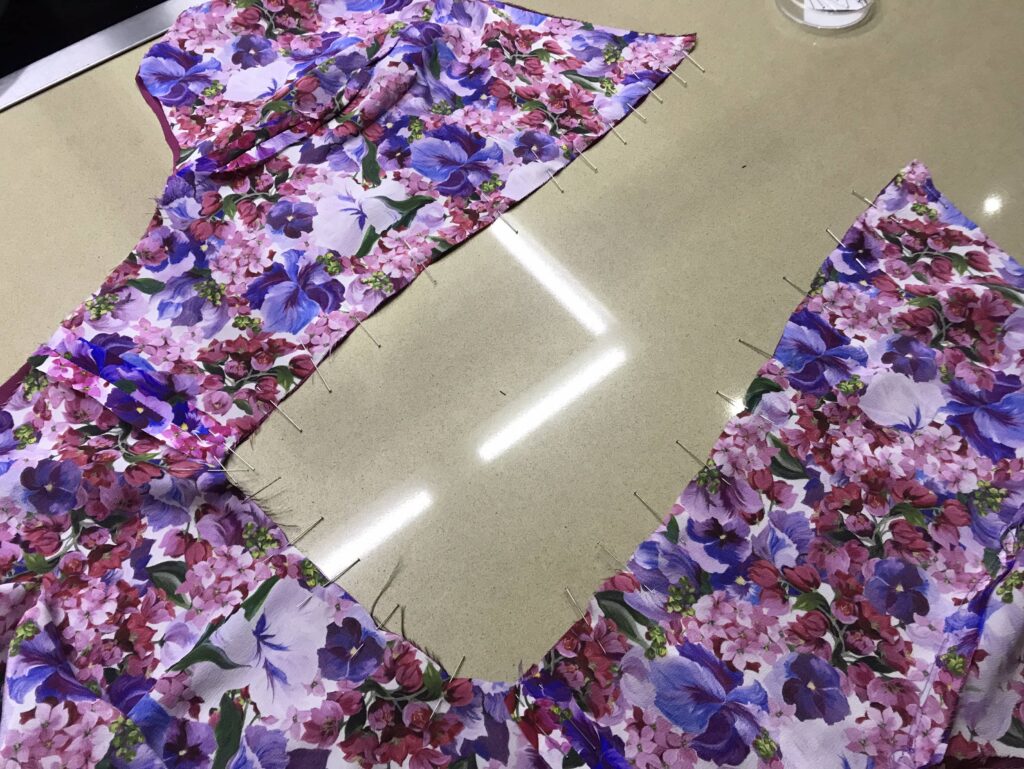
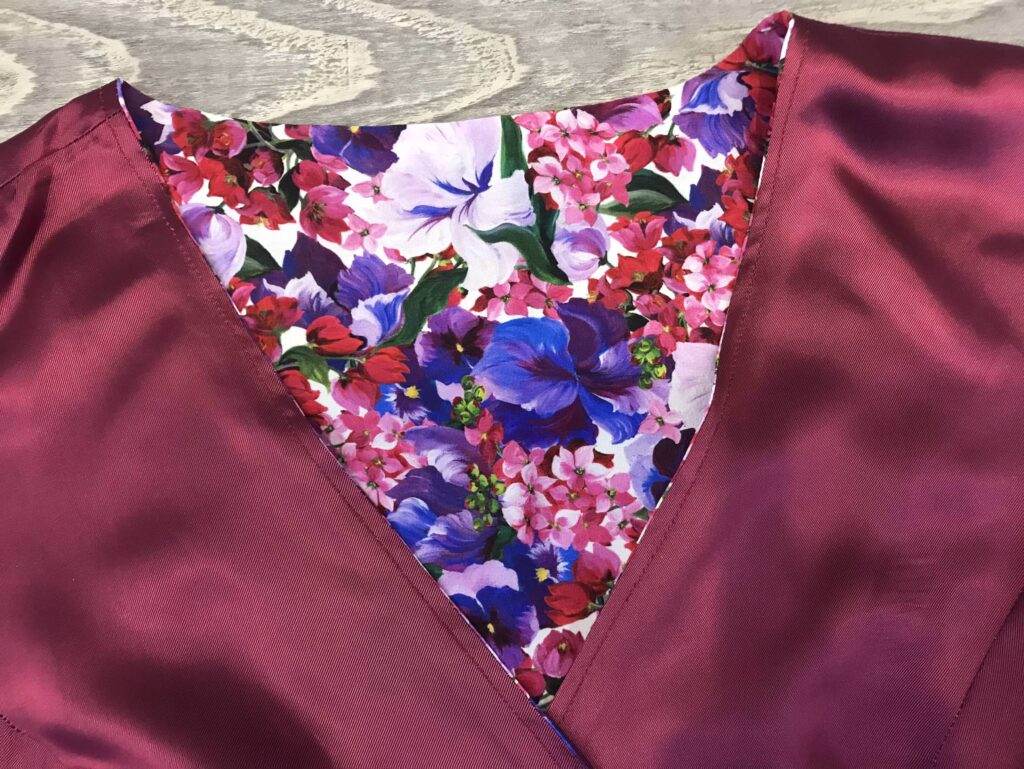
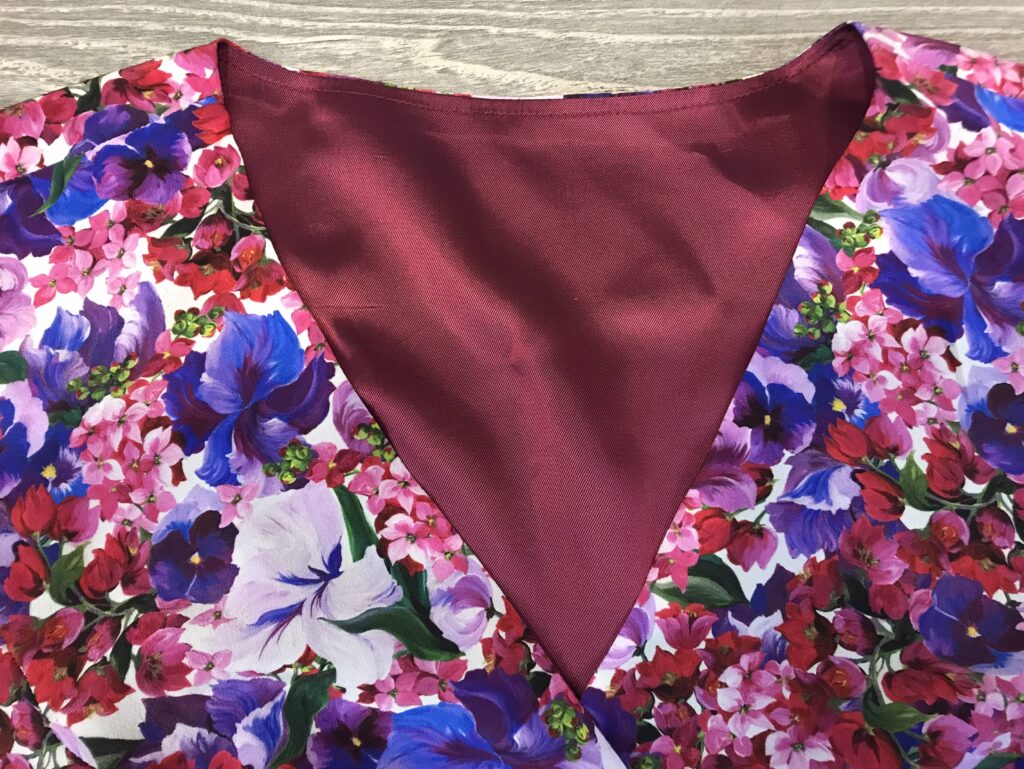
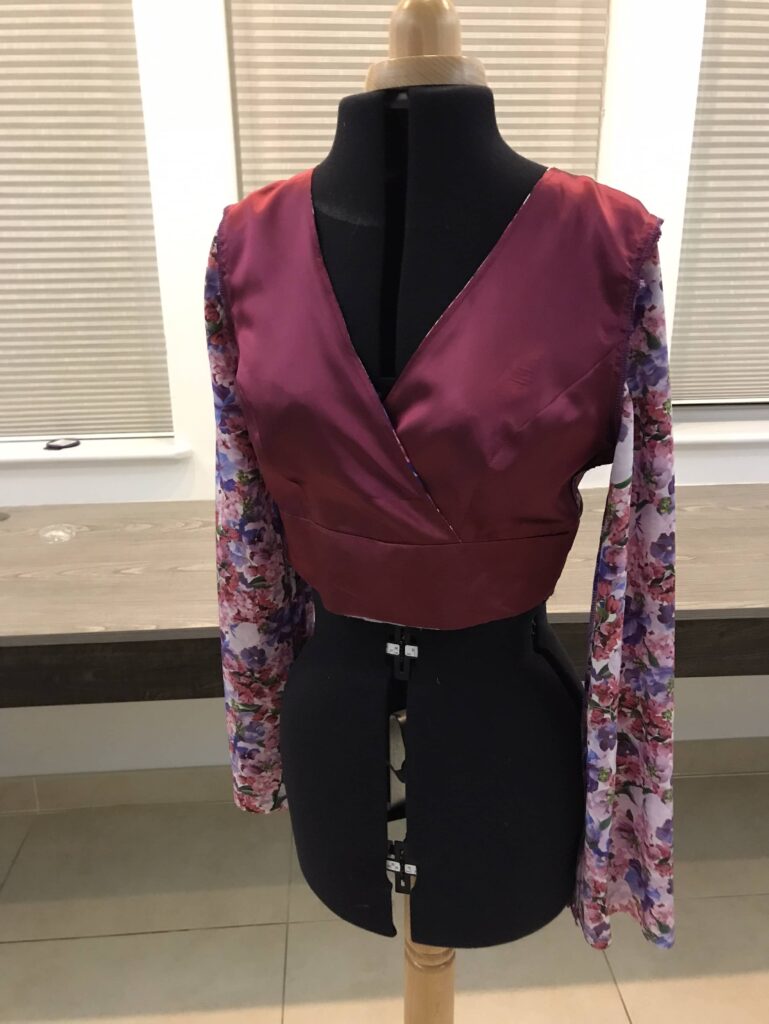
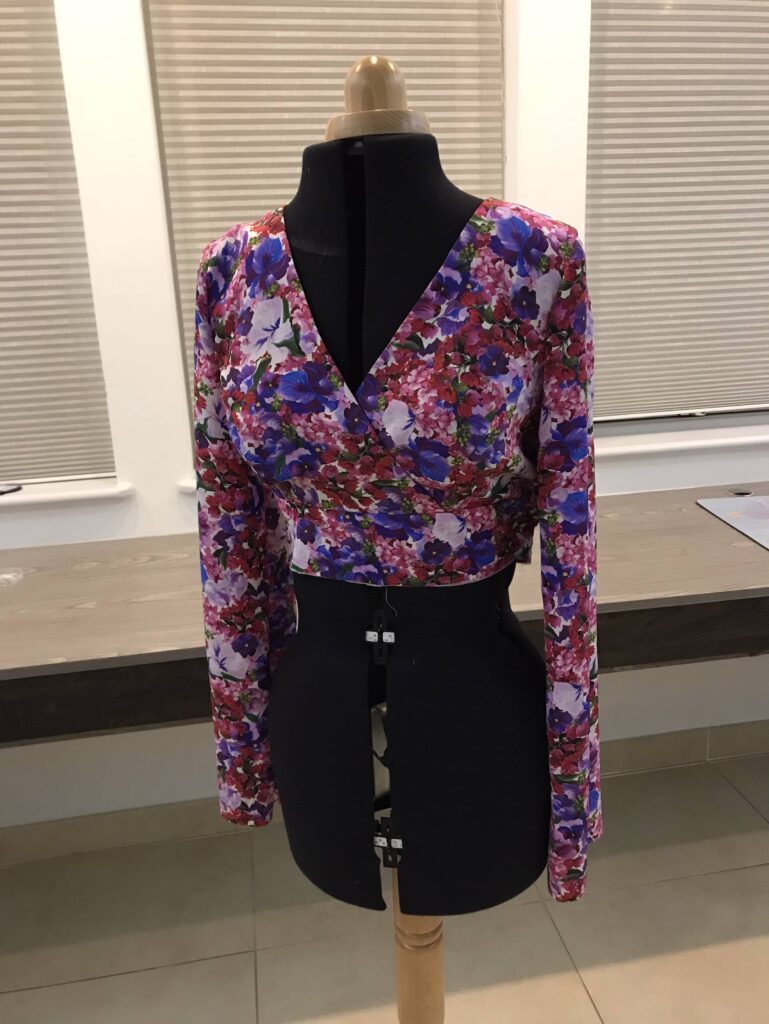
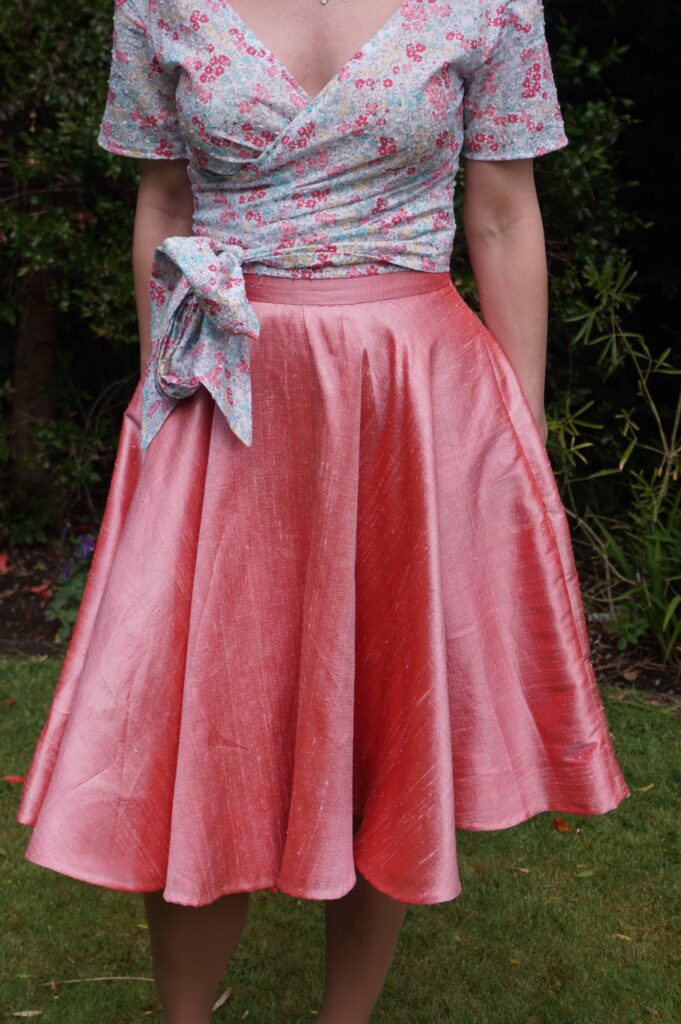
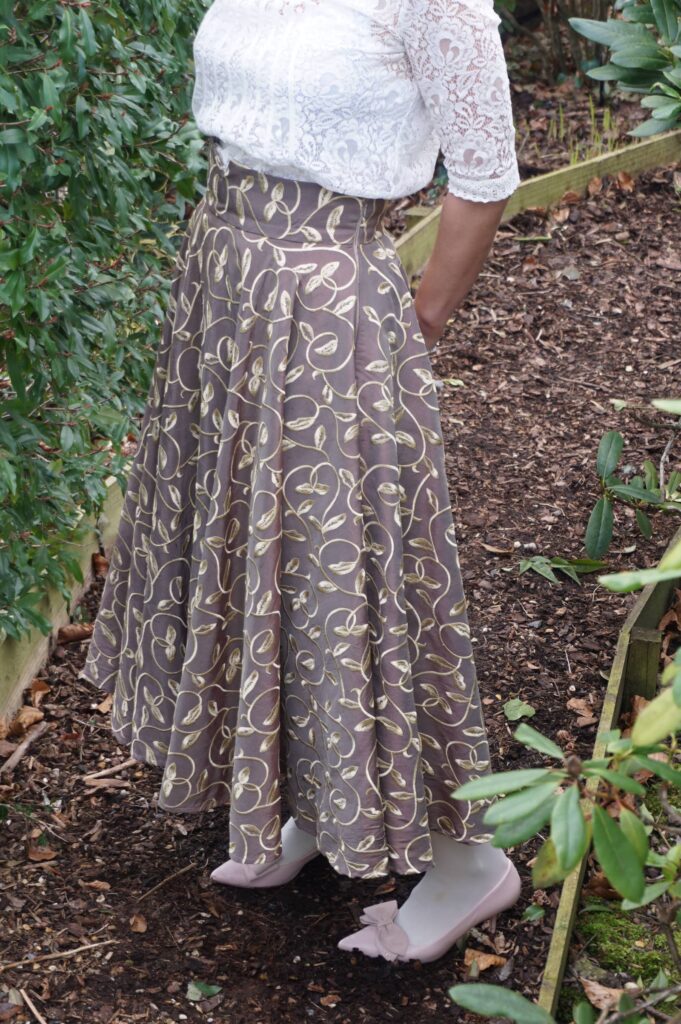
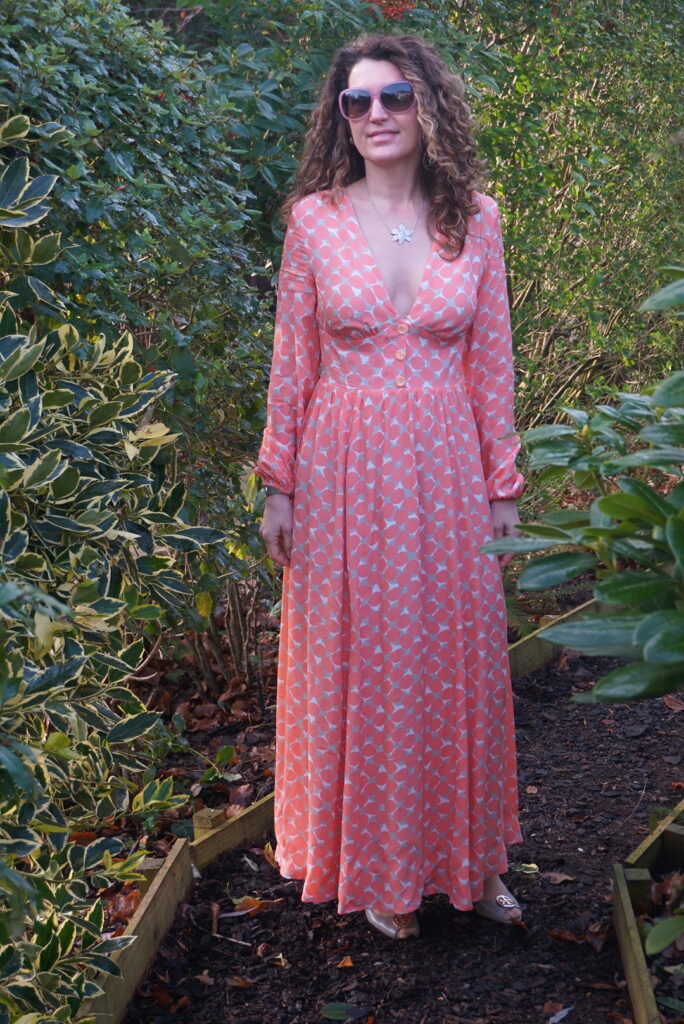
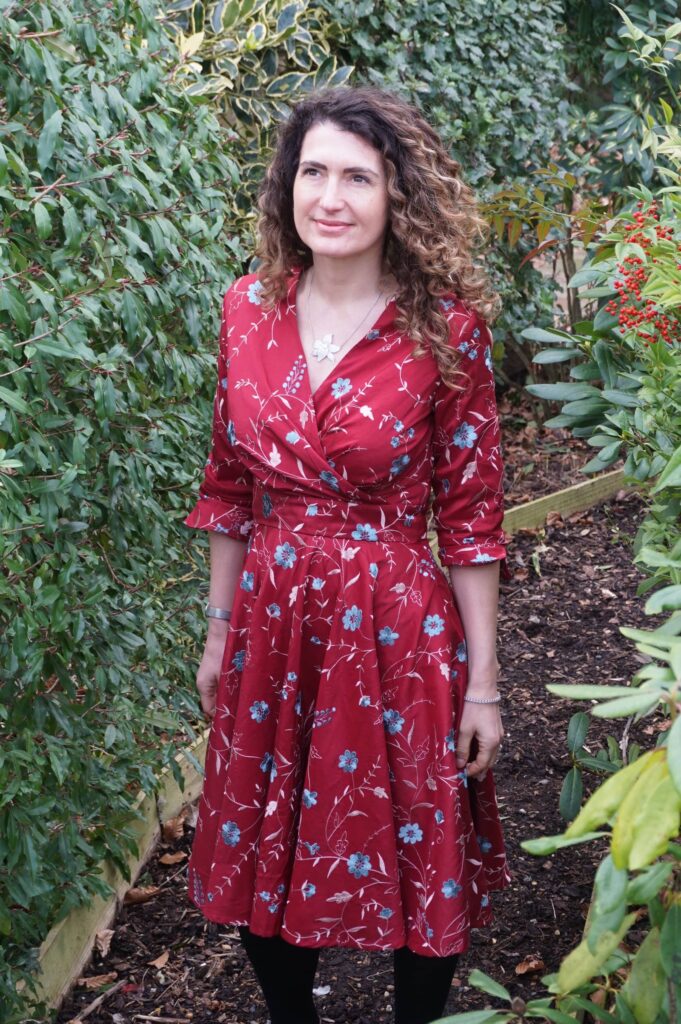
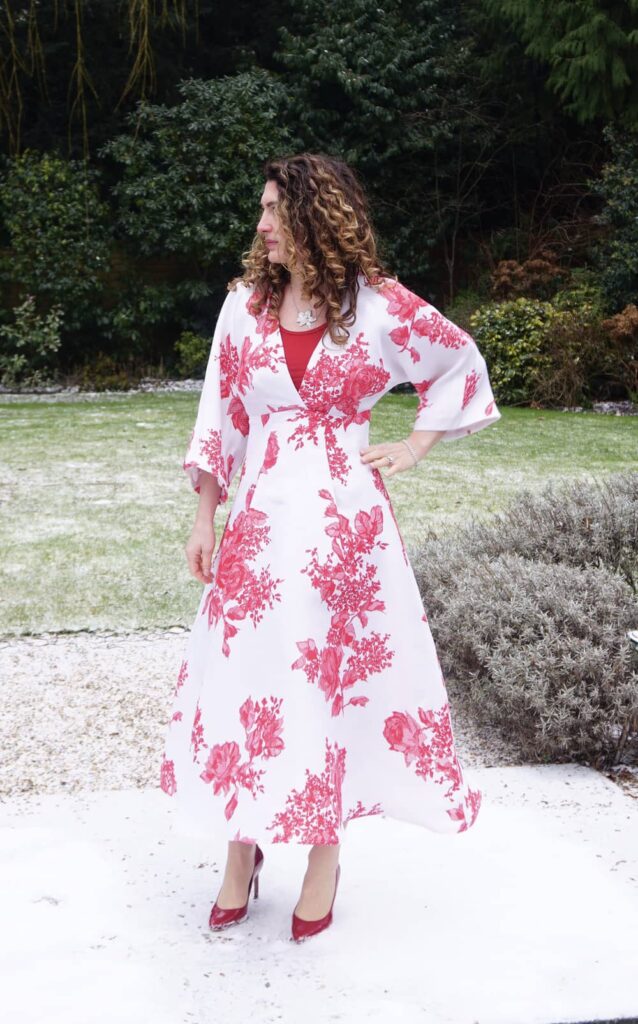
Leave a Reply